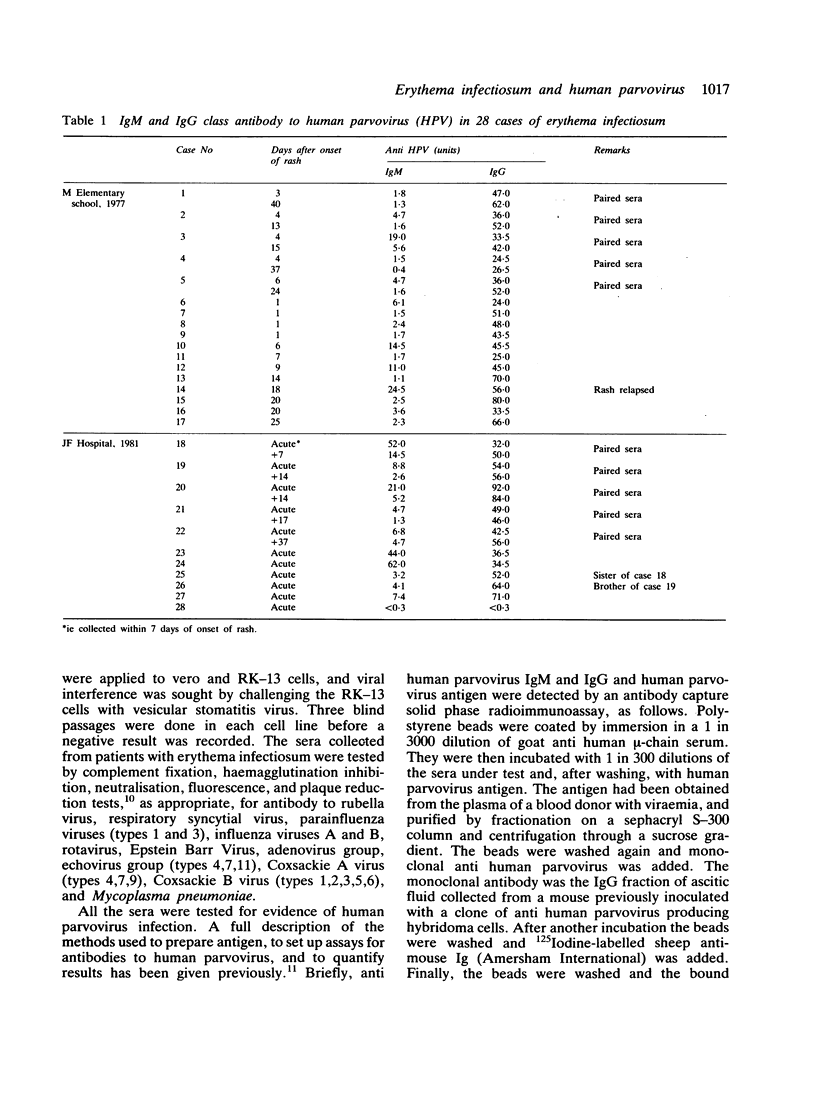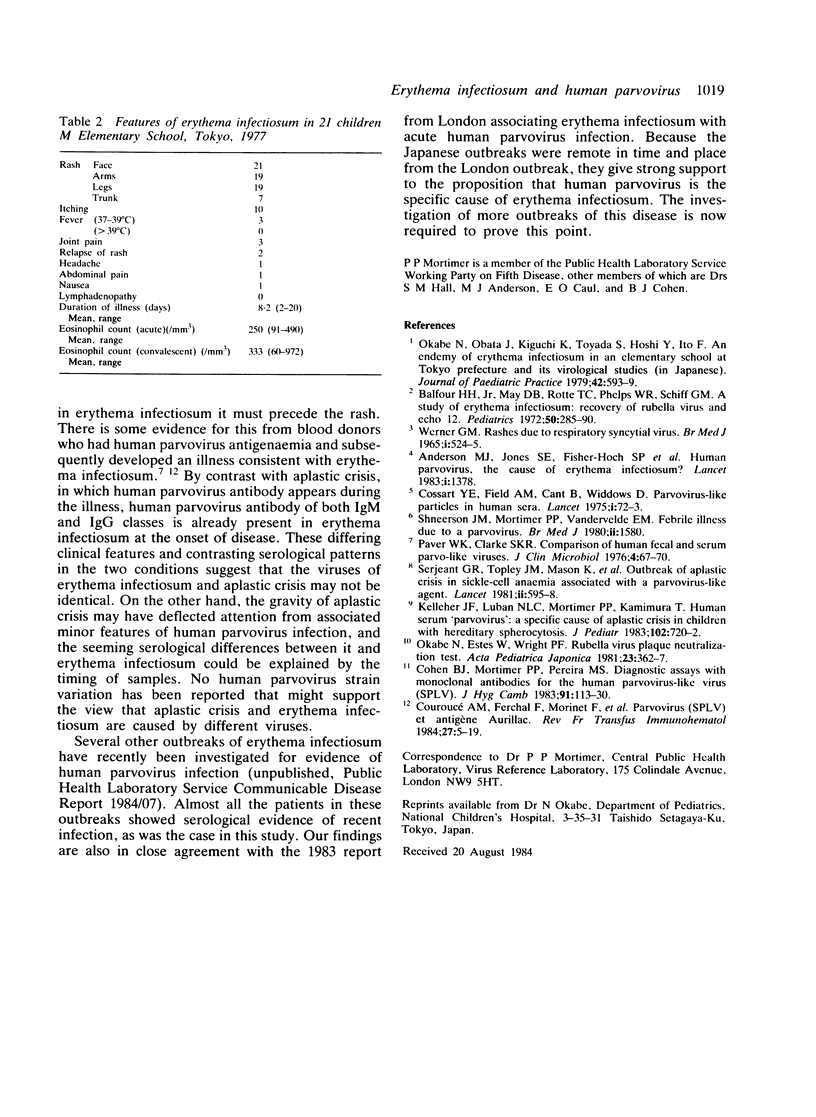Abstract
Two Japanese outbreaks of erythema infectiosum were investigated for evidence of human parvovirus infection by a solid phase antibody capture radioimmunoassay based on a monoclonal antibody to human parvovirus. Specific IgM and high concentrations of specific IgG were detected in 37 sera from 27 children with erythema infectiosum. No anti human parvovirus IgM was detected in a remaining case of erythema infectiosum, in five patients with Kawasaki disease, or in the 17 control children. Seven of the controls were also anti human parvovirus IgG negative, and the 10 who were seropositive had lower concentrations of anti human parvovirus IgG than the patients with erythema infectiosum. These data indicate that human parvovirus is a cause of erythema infectiosum.
Full text
PDF



Selected References
These references are in PubMed. This may not be the complete list of references from this article.
- Anderson M. J., Jones S. E., Fisher-Hoch S. P., Lewis E., Hall S. M., Bartlett C. L., Cohen B. J., Mortimer P. P., Pereira M. S. Human parvovirus, the cause of erythema infectiosum (fifth disease)? Lancet. 1983 Jun 18;1(8338):1378–1378. doi: 10.1016/s0140-6736(83)92152-9. [DOI] [PubMed] [Google Scholar]
- Balfour H. H., Jr, May D. B., Rotte T. C., Phelps W. R., Schiff G. M. A study of erythema infectiosum: recovery of rubella virus and echovirus-12. Pediatrics. 1972 Aug;50(2):285–290. [PubMed] [Google Scholar]
- Cohen B. J., Mortimer P. P., Pereira M. S. Diagnostic assays with monoclonal antibodies for the human serum parvovirus-like virus (SPLV). J Hyg (Lond) 1983 Aug;91(1):113–130. doi: 10.1017/s0022172400060095. [DOI] [PMC free article] [PubMed] [Google Scholar]
- Cossart Y. E., Field A. M., Cant B., Widdows D. Parvovirus-like particles in human sera. Lancet. 1975 Jan 11;1(7898):72–73. doi: 10.1016/s0140-6736(75)91074-0. [DOI] [PubMed] [Google Scholar]
- Couroucé A. M., Ferchal F., Morinet F., Pérol Y., Drouet J., Muller A., Soulier J. P. Parvovirus (SPLV) et antigène Aurillac. Etude de 18 observations. Rev Fr Transfus Immunohematol. 1984 Feb;27(1):5–19. doi: 10.1016/s0338-4535(84)80002-1. [DOI] [PubMed] [Google Scholar]
- Kelleher J. F., Luban N. L., Mortimer P. P., Kamimura T. Human serum "parvovirus": a specific cause of aplastic crisis in children with hereditary spherocytosis. J Pediatr. 1983 May;102(5):720–722. doi: 10.1016/s0022-3476(83)80243-1. [DOI] [PubMed] [Google Scholar]
- Paver W. K., Clarke S. K. Comparison of human fecal and serum parvo-like viruses. J Clin Microbiol. 1976 Jul;4(1):67–70. doi: 10.1128/jcm.4.1.67-70.1976. [DOI] [PMC free article] [PubMed] [Google Scholar]
- Serjeant G. R., Topley J. M., Mason K., Serjeant B. E., Pattison J. R., Jones S. E., Mohamed R. Outbreak of aplastic crises in sickle cell anaemia associated with parvovirus-like agent. Lancet. 1981 Sep 19;2(8247):595–597. doi: 10.1016/s0140-6736(81)92739-2. [DOI] [PubMed] [Google Scholar]
- Shneerson J. M., Mortimer P. P., Vandervelde E. M. Febrile illness due to a parvovirus. Br Med J. 1980 Jun 28;280(6231):1580–1580. doi: 10.1136/bmj.280.6231.1580. [DOI] [PMC free article] [PubMed] [Google Scholar]
- WERNER G. H. RASHES DUE TO RESPIRATORY SYNCYTIAL VIRUSES. Br Med J. 1965 Feb 20;1(5433):524–525. doi: 10.1136/bmj.1.5433.524-c. [DOI] [PMC free article] [PubMed] [Google Scholar]


